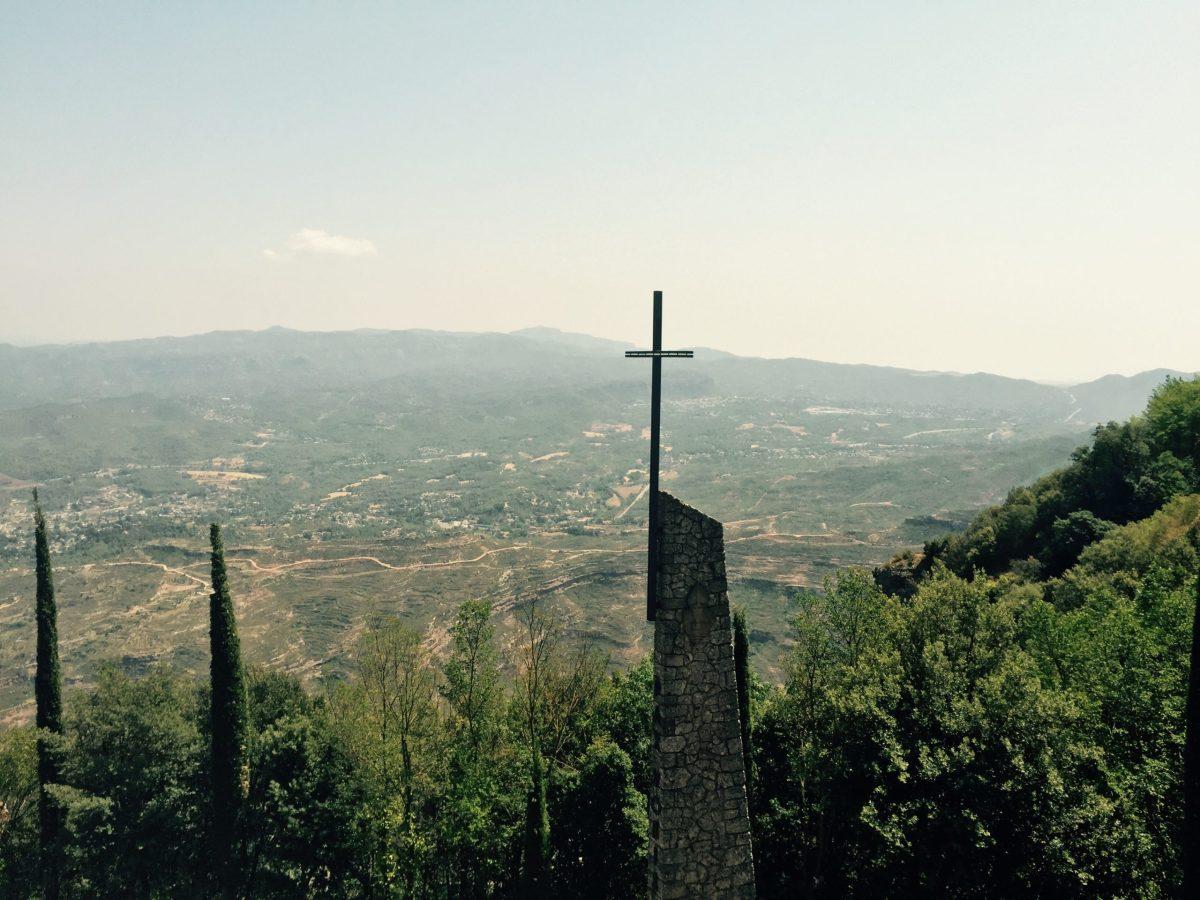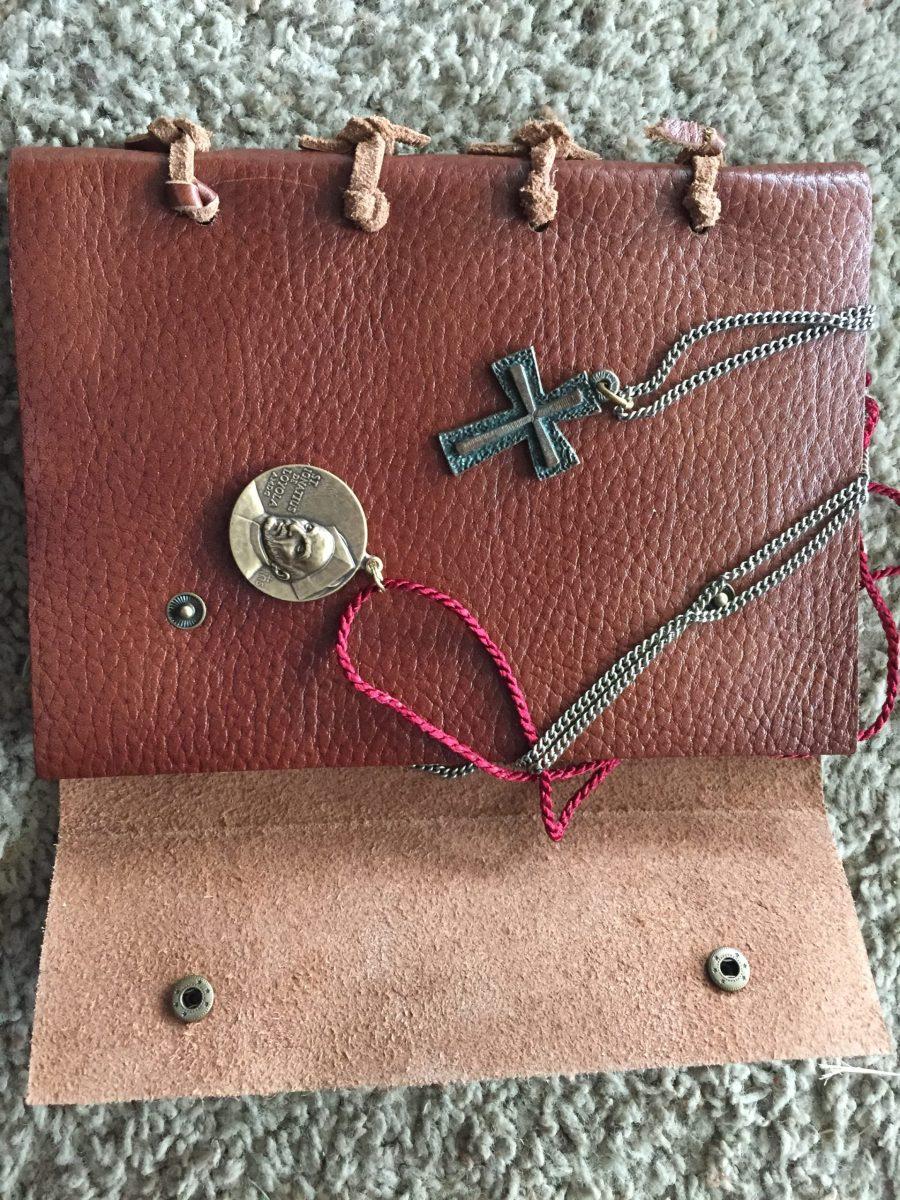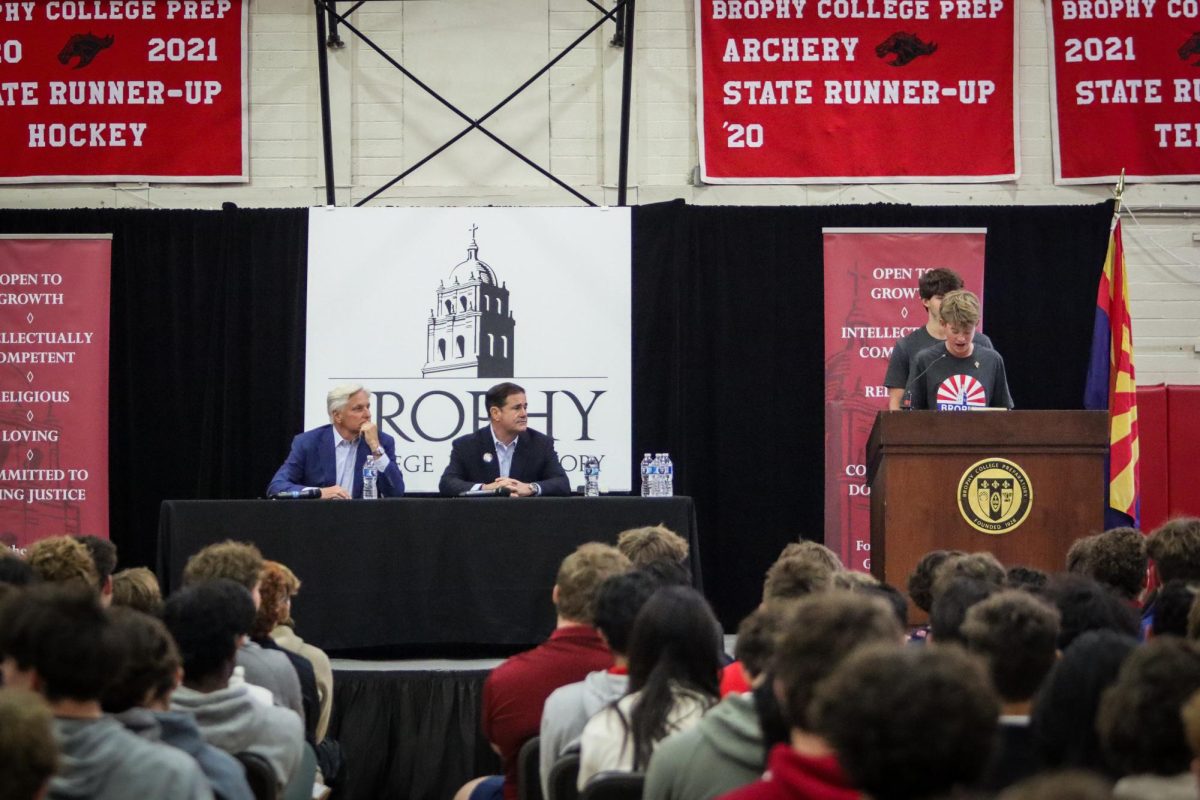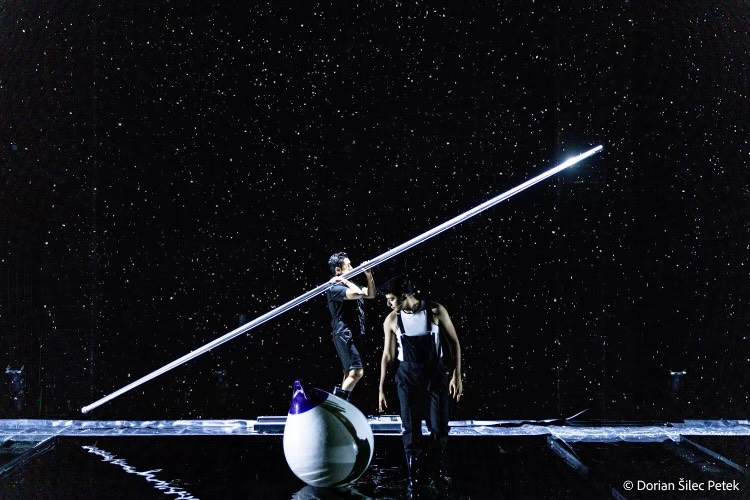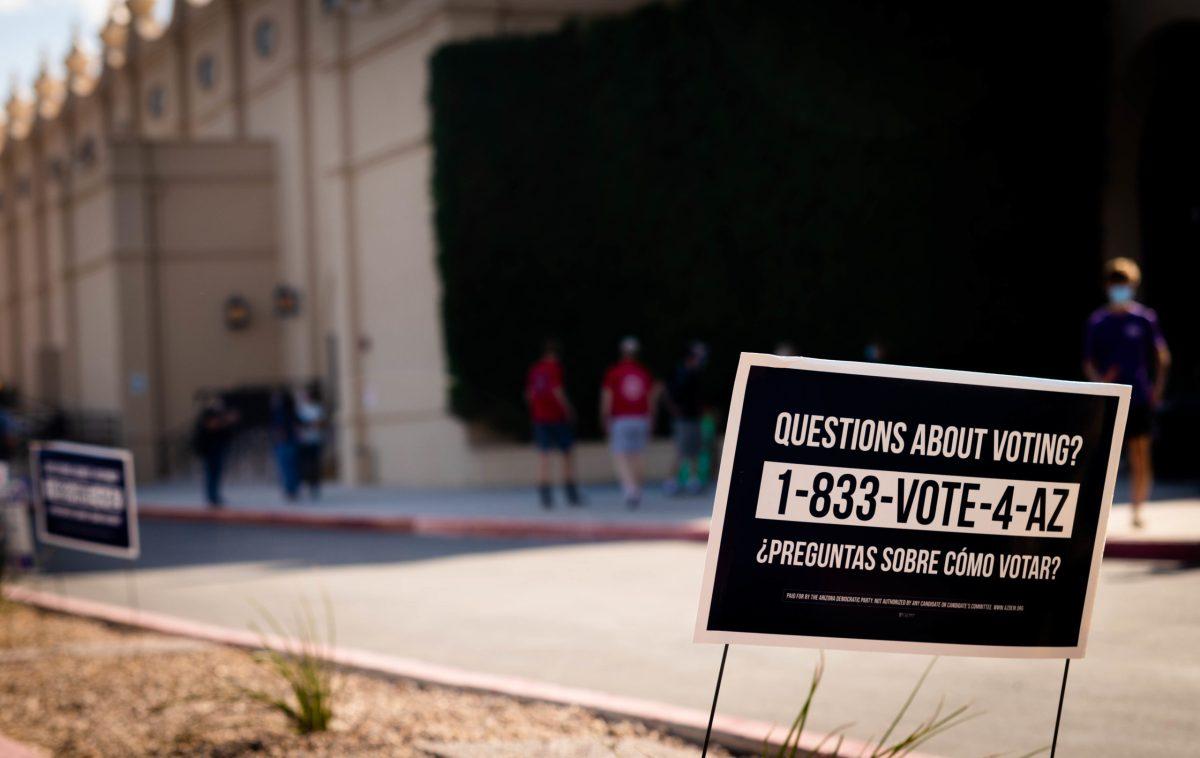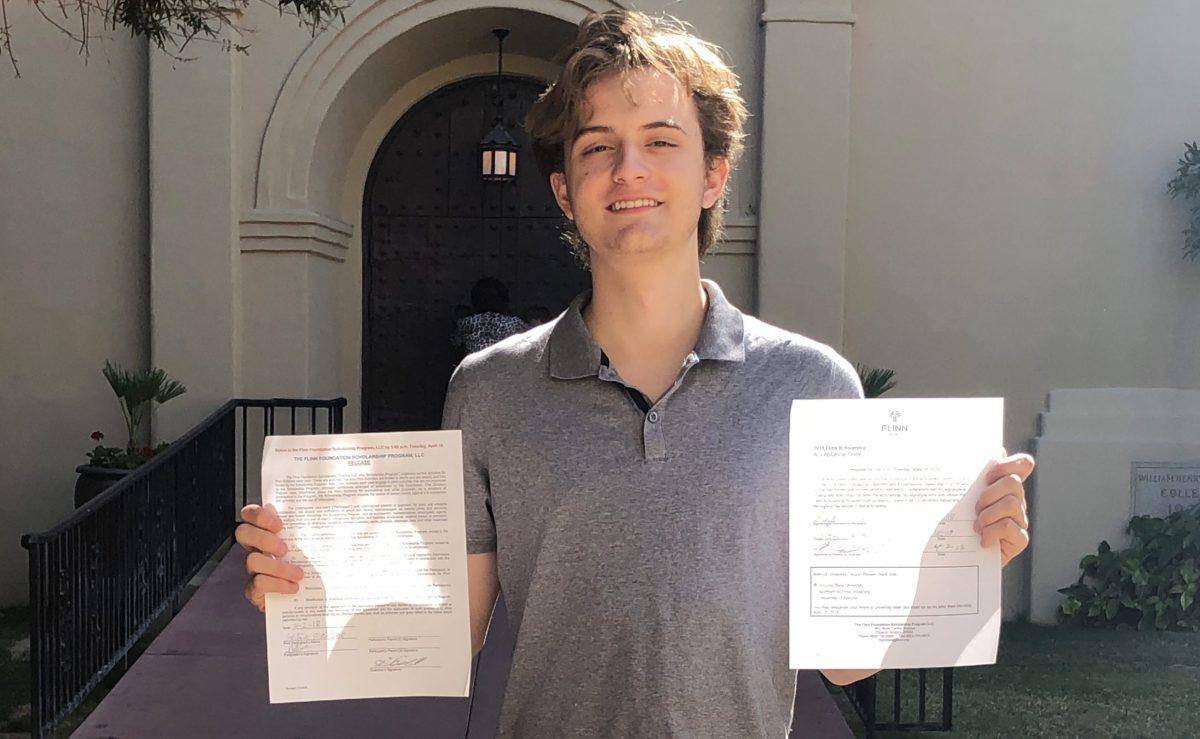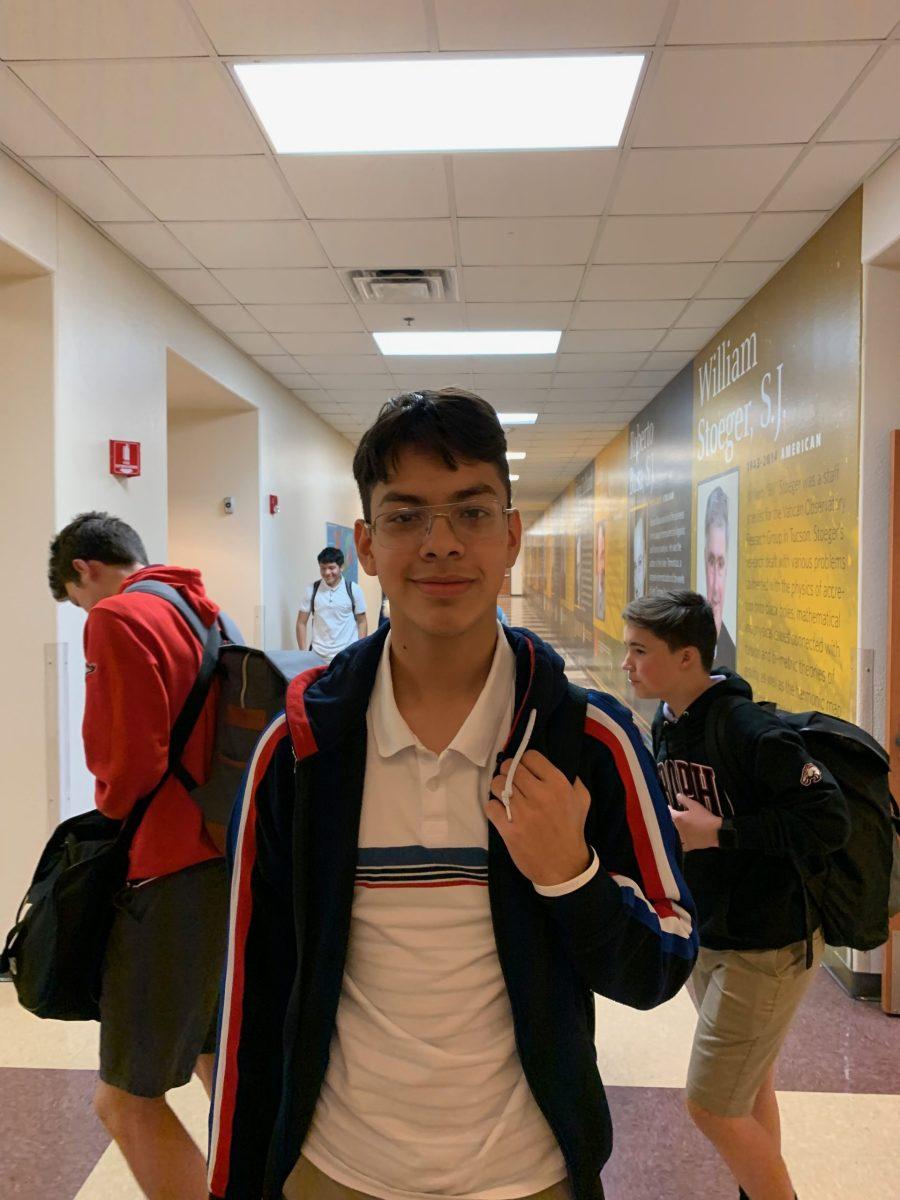Photos by Mr. Paul Fisko and Cameron Bray ’16 — Several students traveled to Spain over the summer
By Cameron M. Bray ’16
THE ROUNDUP
Our pilgrimage across Spain began July 10 when we reached Azpeitia, a city in the Basque Country near where St. Ignatius of Loyola was born.
When we reached the convent where we were staying, we exited the bus and were immediately awed by the gorgeous views of the mountains surrounding us.
Already we could tell this trip was going to be special.
Participating in a brand new Brophy immersion trip, El Camino Iganciano (The Walk of Ignatius), we eight students along with our teachers and Catalan colleagues were about to walk the same path St. Ignatius once took.
The next day we visited an important site in Jesuit history: the house of St. Ignatius, which was about a 10-minute walk from the convent in Azpeitia.
Interestingly, the house was divided into two parts. The top half was entirely constructed of brownish bricks, while the bottom half was made purely of dark gray stone.
Inside, the house seemed very much like a fortress. There were few windows, so the place was not well lit, and there were occasional slits in the wall were arrows or other projectiles could shot out of.
In the words of our guide, the Rev. Josep Lluís Iriberri, before Ignatius’s time, this house was very much a “place of war.”
Originally, the house was constructed entirely of stone—the top floor was not brick—and it had seen several battles back in its day.
But it was torn down during the time of St. Ignatius’s grandfather, who was exiled by the king of Castille for siding with the wrong people in a feud or struggle.
Eventually pardoned, St. Ignatius’s grandfather was allowed to return to the Basque Country and rebuild his house on one condition: it could not be built entirely of stone; the top half would have to be brick.
That is how his house came to appear as it does today, and it looks almost exactly as it did when St. Ignatius lived there.
The third and fourth floors contained the most significant sights in the building: the room where St. Ignatius was born, the dining room where the family ate and, most importantly, the room where St. Ignatius spent his recovery and underwent his spiritual conversion.
The room where St. Ignatius recovered has now been converted into a small chapel; we had Mass there.
As Father Iriberri said the words and gave the eucharist, we all felt this special energy fill the room.
We knew this was a truly incredible spot to have Mass and to pray and we were all grateful to be there.
After Mass (and some group photos in the chapel), we left the house and went to the Basilica of St. Ignatius next door.
A beautiful structure—very ornate, very baroque—with splendidly decorated altars, the basilica serves as a perfect monument to the monumental figure that was St. Ignatius.
Walking in Silence
The next day we began the trek in proper.
After a short mass at the Sanctuary of Arantzazu, we took a drive up Oñati, where we began our hike.
Like we did every day of hiking thereafter, we walked the first two hours in silence.
For me, it was difficult at first.
Staving off the boredom and monotony of each step was a mental struggle as well as a physical one.
But gradually, I began to appreciate the two hours of silence we hiked in each day.
I noticed things that I would have missed had I been talking to people or listening to music.
I heard the sounds of the birds chirping, the wind blowing through the trees and my feet taking each step that St. Ignatius once took.
I felt the sun beat down upon my face.
I felt acutely the gradual exhaustion that came with each step further.
The two hours of silence forced my eyes open so that I could see the world around me and not let it slip me by.
Because of those two hours, I appreciated how truly special it was that I was in the Basque Country and that I was taking part in this pilgrimage.
And I felt grateful to God for granting me the opportunity to be here and for giving me the power to see all of his beautiful creation and to endure the hardships of this hike.
By the end of the day we had hiked 15 miles through the beautiful mountains and forests of the Basque Country, and we were exhausted.
We spent our last night at the convent before leaving the next day for Lleida, a town in western Catalonia.
Two days later we began our hike anew from Lleida, where we trekked through many miles of Catalan farmland.
We were no longer in the mountains and Spain was right in the middle of a heat wave, so we were very hot.
Each morning we began hiking around 7 a.m. to avoid the heat, but nonetheless we still found ourselves caught in it.
Around 11 a.m., the temperature reached the high 90s, and we had to walk tens of miles through it—with heavy bags on our backs and hats on heads protecting us from the oppressive sun.
It was a true test of willpower—but we endured.
I remember one particular moment on our hike when things seemed the most dismal for me.
It was two days after we had left the Basque Country.
We started our day by departing from a village called El Palau d’ Anglesola and soon we were trekking through nothing but a barren valley.
That was the most desolate place I had ever been to.
There were no other travelers along the road. The only lifeforms we encountered were some sheep, a couple of goats and a guard dog in front of a makeshift pasture.
The road was dotted with ruined stone houses and abandoned buildings.
By the looks of them, no one had lived in the houses for decades.
All the while the sun was relentlessly beating down on us. It was perhaps the hottest day of our hike.
The valley made me feel small—small like the way someone feels when they look up at a night sky full of stars, alone.
It was the kind of small that makes a man question his place in the universe, which is so incomprehensibly big compared to his tiny, contemplating self.
While the Basque Country made me feel like I had all the answers, this barren valley reminded me that I’m just a man.
I’m just a man caught in the grand scheme of things, just trying to understand the universe around him and to do the best he can with the life he’s been given.
Reaching Manresa
The next few days were difficult and largely uneventful.
We visited several towns along our hike—Verdú, Cervera and Jorba—but none of them stood out to me.
The most interesting thing that happened was on our way to Jorba.
That day day we walked the single greatest distance of the entire trip: 24 miles.
By the time we reached Jorba, we were exhausted beyond belief.
Our legs were killing us and the blisters on our feet weren’t helping either.
So we all practically jumped for joy when we reached the hostel where we staying.
We slept easy that night.
During the next two days we saw the two highlights of St. Ignatius’s journey: the peaks of Montserrat and the city of Manresa.
The monastery at Montserrat is where St. Ignatius underwent his three-day-long conversion, traded clothes with a beggar and kept his vigil in front of the altar of the Blessed Virgin.
It was the site of his main spiritual conversion—the point where he shed his former life as a soldier and a noble and assumed his new life as a hermit and pilgrim.
We visited and stayed in this monastery and saw the exact statue of the Virgin where he prayed.
It was a very moving experience.
The next day we hiked down the mountain and we saw Manresa, the city where St. Ignatius wrote “The Spiritual Exercises” and the city that inspired Brophy’s namesake retreat center.
We even saw the cave where St. Ignatius wrote the exercises. And we had Mass down there, in that tiny dark little cave.
Like the Mass we had at the Loyola house, it was a very special experience for all of us.
Manresa, also, was where we ended our trek through Spain.
We took our last official step of our 125-mile journey walking into Manresa’s office of tourism.
There we received the final stamp for our pilgrim passports, signaling that we had completed the Ignatian pilgrimage.
Certainly, it was a relief for all of us knowing that we did not have to walk any farther, but I think we were all in a way saddened by the news.
This was the end of the Camino.
We would fly back to Phoenix in two days, returning to our dull, normal lives.
How would we feel after going on this pilgrimage? Would our relationships with our family, our friends or even with each other change?
Would we be changed in ways we that wouldn’t even recognize?
These were the types of questions we mulled over on our trip back to Phoenix besides the normal, “Is it really going to be on 105°F when we get back to Phoenix?” types of things.
___
This trip was led by Mrs. Catharine Steffens and Mr. Paul Fisko with the help of the Rev. Josep Lluís Iriberri, who directs the Office of the Camino Ignaciano, and Mr. Brian Ohogain from the Escola Infant Jesus in Barcelona.
The students that participated in this trip were: John Legris ’16, Alejandro Jimenez ’16, Marc Edens ’16, Tommy Zachar ’16, Erik Deyden ’17, Matthew Chavira ’17, Jim Kelly ’17 and Cameron Bray ’16.
















